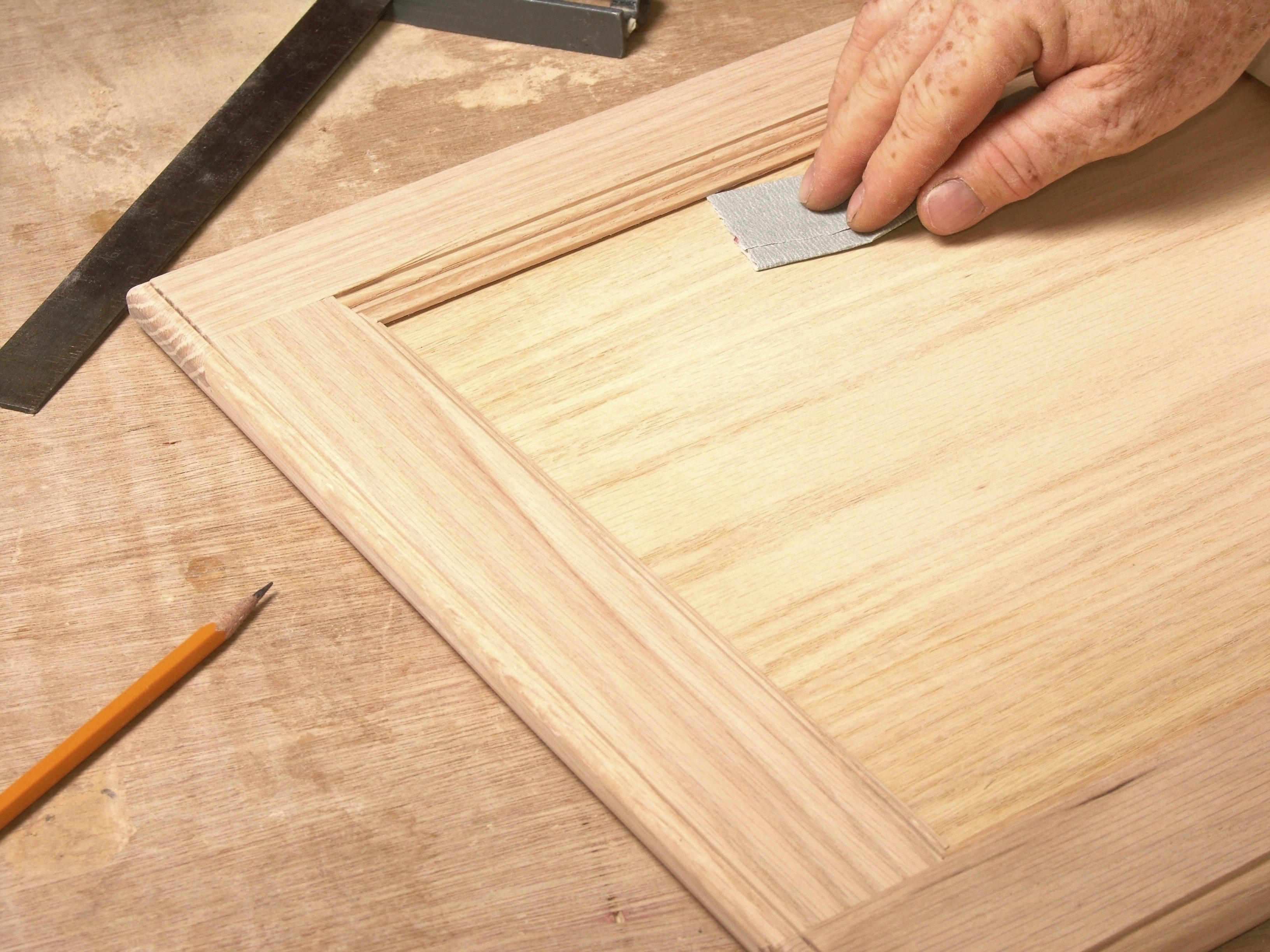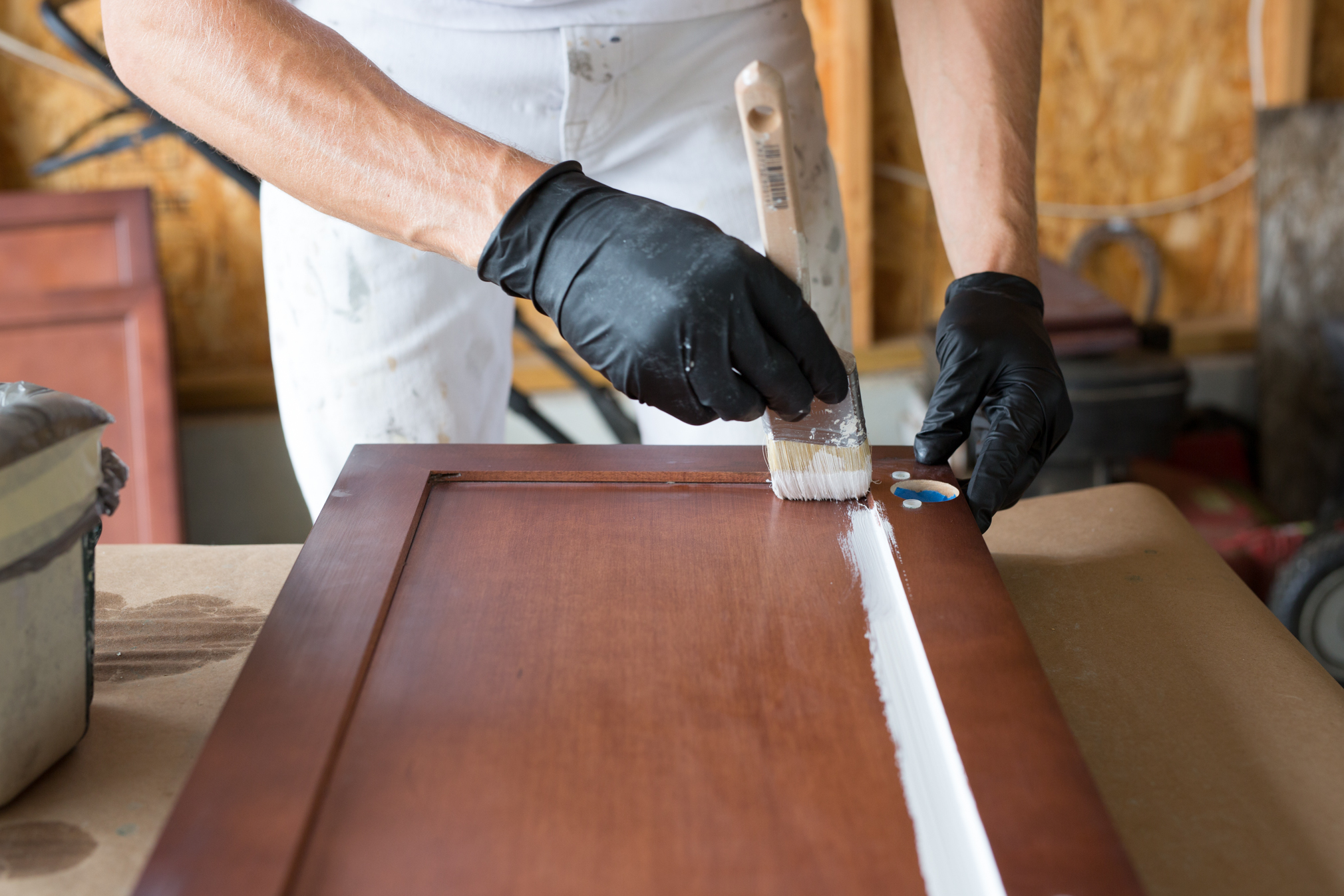Preparing Kitchen Cabinets for Sanding and Staining

Proper preparation is key to achieving a beautiful and long-lasting finish on your kitchen cabinets. Before you even think about picking up a sander, it’s essential to get your cabinets ready for the transformation.
Cleaning Kitchen Cabinets, How to sand and stain kitchen cabinets
A clean surface is crucial for proper sanding and staining. Start by removing all the hardware, including hinges, knobs, and pulls. Use a degreaser or a mild soap and water solution to clean the cabinets thoroughly, removing any dirt, grease, or grime. Wipe them down with a clean, dry cloth, ensuring no residue remains.
Removing Existing Finishes
The next step is to remove any existing finishes, such as paint or varnish, from the cabinets. There are two primary methods: sanding and chemical stripping.
Sanding
Sanding is a common method for removing old finishes, particularly for light sanding or removing minor imperfections. Begin with a coarse grit sandpaper (80-120 grit) to remove the bulk of the finish. Gradually progress to finer grits (120-220 grit) for a smoother surface. Remember to sand with the grain of the wood to avoid scratches and unevenness.
Chemical Stripping
For stubborn finishes or thick layers of paint, chemical stripping might be necessary. Choose a stripper specifically designed for the type of finish you’re removing. Apply the stripper according to the manufacturer’s instructions, and let it sit for the recommended time. Use a scraper or putty knife to remove the softened finish, and then neutralize the stripper with a solution of baking soda and water. Rinse thoroughly and allow the cabinets to dry completely.
Filling Gaps and Holes
Before sanding, it’s essential to fill any gaps or holes in the cabinets. Use wood filler or a similar product to create a smooth surface. Apply the filler with a putty knife, ensuring it’s level with the surrounding wood. Allow the filler to dry completely before sanding it smooth.
Sanding for Staining
Once the cabinets are clean, stripped, and filled, you’re ready for sanding. Sanding is essential to create a smooth surface for the stain to adhere to evenly. Start with a coarse grit sandpaper (80-120 grit) to remove any remaining imperfections. Gradually progress to finer grits (120-220 grit) for a smoother finish. Finally, use a very fine grit sandpaper (220-400 grit) to create a silky smooth surface for the stain.
Sanding Kitchen Cabinets for a Smooth Finish: How To Sand And Stain Kitchen Cabinets

Okay, so you’ve prepped your cabinets, now it’s time to get those bad boys smooth! Sanding is crucial for a flawless finish and to ensure your stain adheres evenly.
Choosing the Right Sander
Choosing the right sander for your kitchen cabinets can make a huge difference. Let’s break down the options:
- Orbital Sander: Your go-to for most sanding jobs, especially on flat surfaces. It’s user-friendly and creates a smooth finish.
- Random Orbit Sander: Offers a more refined finish than an orbital sander and is ideal for removing scratches and imperfections.
- Belt Sander: Powerful and aggressive, this one’s best for stripping old paint or sanding down large areas quickly. It’s not recommended for fine sanding on cabinets.
- Palm Sander: Compact and easy to maneuver, perfect for reaching tight corners and detailed areas.
Sanding Techniques for a Flawless Finish
Here’s the lowdown on how to sand your cabinets like a pro:
- Sand with the Grain: Always sand in the direction of the wood grain. This creates a smoother finish and avoids scratches that can show up in the final stain.
- Light Pressure: Apply gentle pressure when sanding. Too much pressure can create uneven sanding and damage the wood.
- Overlap Strokes: Overlap your sanding strokes by about 50% to ensure a smooth, consistent finish.
- Sanding Stages: Sanding involves multiple stages to achieve a smooth surface:
Sandpaper Grit Guide
| Sanding Stage | Recommended Grit |
|---|---|
| Rough Sanding | 80-120 grit |
| Intermediate Sanding | 120-180 grit |
| Final Sanding | 220-400 grit |
Staining Kitchen Cabinets for a Desired Look

Staining your kitchen cabinets is a great way to give them a fresh new look. It’s a relatively inexpensive project that can be done in a weekend, and it’s a great way to add some personality to your kitchen. There are many different types of wood stains available, so it’s important to choose the right one for your project. Let’s delve into the world of stains and their unique characteristics.
Types of Wood Stains
The type of stain you choose will depend on the type of wood you’re staining, the desired look, and your personal preference. Here’s a breakdown of the most popular types:
- Oil-based stains are known for their deep penetration into the wood, resulting in a rich, even color. They are also very durable and resistant to water damage. Oil-based stains are the most traditional type of stain and are often preferred by experienced woodworkers. They do require more time to dry, however, and they can be difficult to clean up.
- Water-based stains are becoming increasingly popular due to their ease of use and quick drying time. They are also less toxic and easier to clean up than oil-based stains. Water-based stains are a good choice for beginners, but they may not penetrate the wood as deeply as oil-based stains. They also tend to raise the grain of the wood, which may require additional sanding.
- Gel stains are a hybrid of oil-based and water-based stains. They have the deep penetration of oil-based stains and the ease of use of water-based stains. Gel stains are a good choice for projects that require a thick, even coat, such as staining cabinets. They also tend to be more forgiving than other types of stains, as they are less likely to run or drip.
Choosing the Right Stain Color and Finish
The color of the stain you choose will depend on the wood type, cabinet style, and your desired aesthetic.
- Wood type: Different wood types have different colors and grain patterns. For example, oak is a light-colored wood with a prominent grain pattern, while cherry is a darker wood with a finer grain. When choosing a stain, consider the natural color of the wood and how the stain will enhance or change it.
- Cabinet style: The style of your cabinets will also influence the color of the stain you choose. For example, traditional cabinets often look best with a dark stain, while modern cabinets may look better with a lighter stain. If you are unsure about the best color for your cabinets, you can always consult with a professional.
- Desired aesthetic: The desired aesthetic is your personal preference for the final look of your cabinets. Do you want a light and airy feel or a rich and dramatic look? The stain color you choose will play a significant role in achieving the desired aesthetic.
Applying Wood Stain
Once you have chosen the right stain, it’s time to apply it.
- Pre-staining: Before applying the stain, it is important to pre-stain the wood. This will help to ensure that the stain is evenly absorbed and that the color is consistent. Pre-staining can be done with a pre-stain conditioner or a wood conditioner.
- Applying the stain: The best way to apply stain is with a brush. Dip the brush into the stain and apply it to the wood in a thin, even coat. Be sure to work in the direction of the grain. You can also use a rag to apply the stain, but be careful not to over-apply it.
- Wiping excess stain: After applying the stain, wipe off any excess with a clean cloth. The amount of time you allow the stain to sit before wiping will determine the depth of the color.
- Drying time: The drying time for stain will vary depending on the type of stain and the temperature and humidity of the environment. Oil-based stains typically take 24 hours to dry, while water-based stains may only take a few hours. It is important to allow the stain to dry completely before applying a topcoat.
How to sand and stain kitchen cabinets – Sanding and staining kitchen cabinets is a rewarding DIY project that can completely transform your space. If you’re looking for a calming and sophisticated color, consider a blue gray kitchen cabinet finish. The process is simple: start by sanding the cabinets to create a smooth surface, then apply a quality stain in the desired shade, followed by a protective sealant.
The result? A timeless and elegant look that will make your kitchen the heart of your home.
Transforming your kitchen cabinets with a fresh coat of stain can be a rewarding project, but sanding them down correctly is crucial for a smooth, even finish. Oak is a popular choice for cabinets, and using a gel stain like those discussed in this comprehensive guide can give your cabinets a beautiful, rich color.
Once you’ve chosen your stain, remember to apply it in thin, even coats, allowing each layer to dry completely before moving on to the next. With careful preparation and application, you’ll be amazed at the difference a new stain can make in your kitchen.